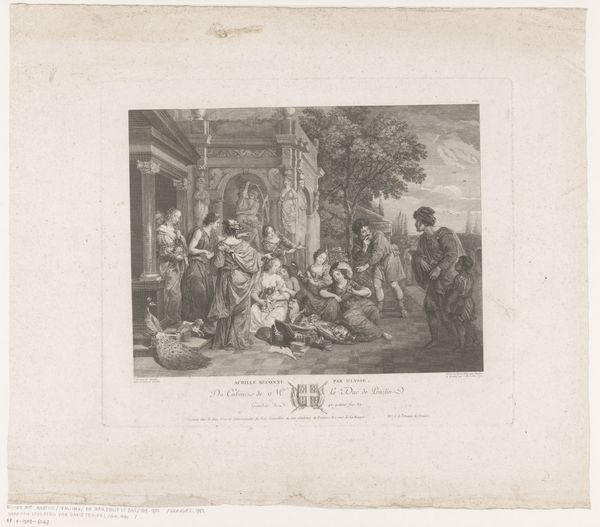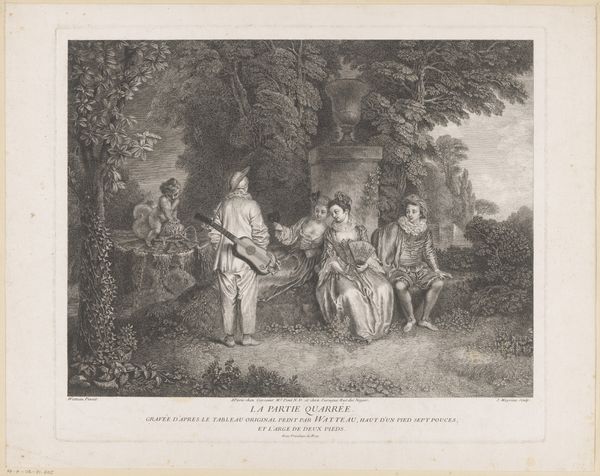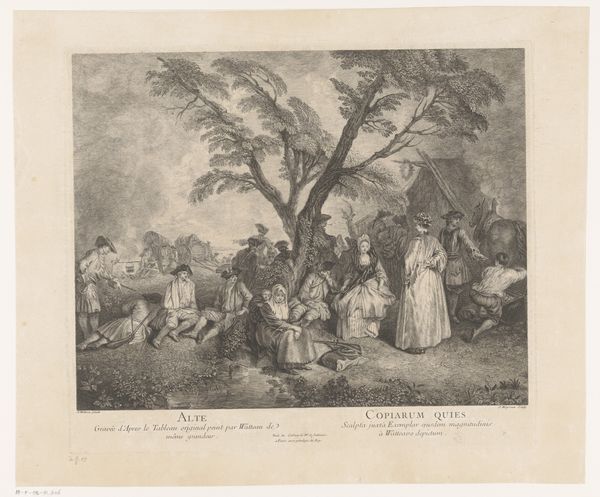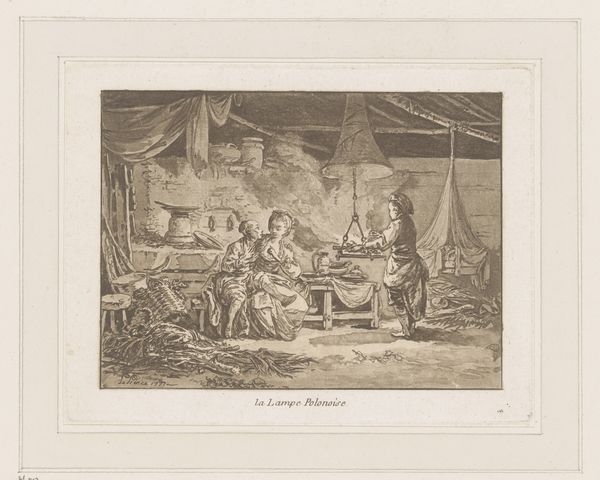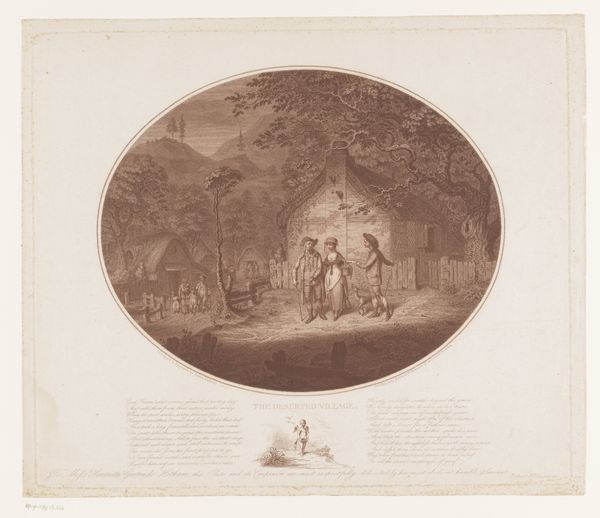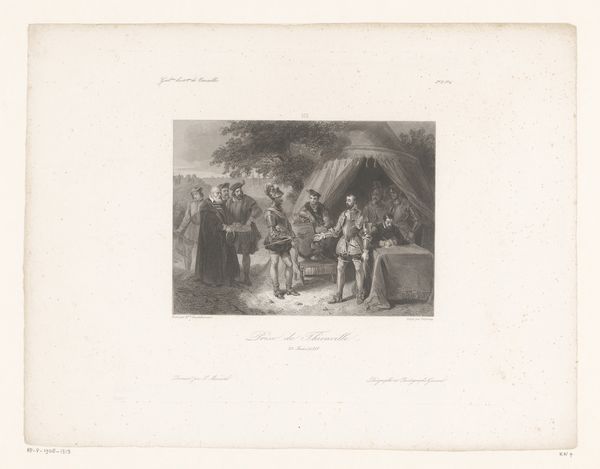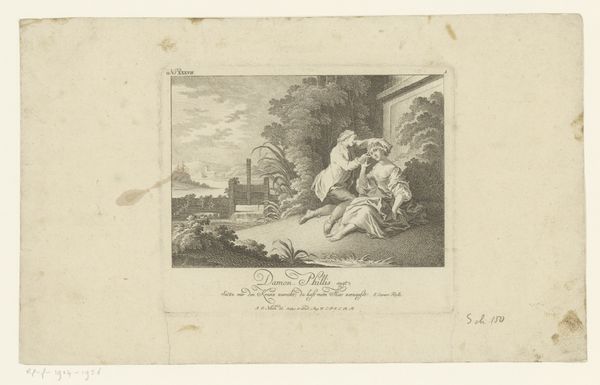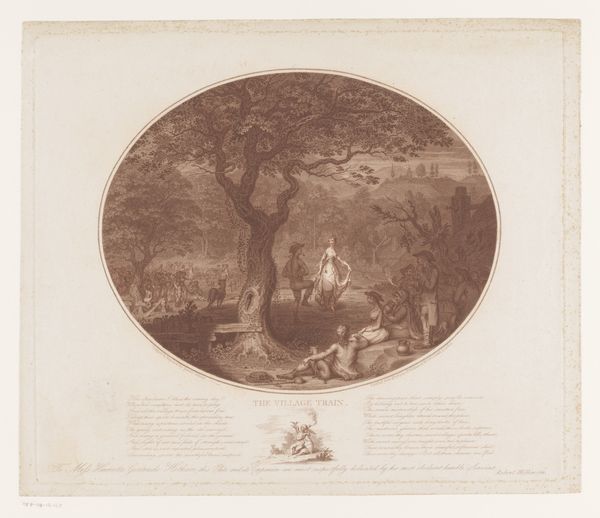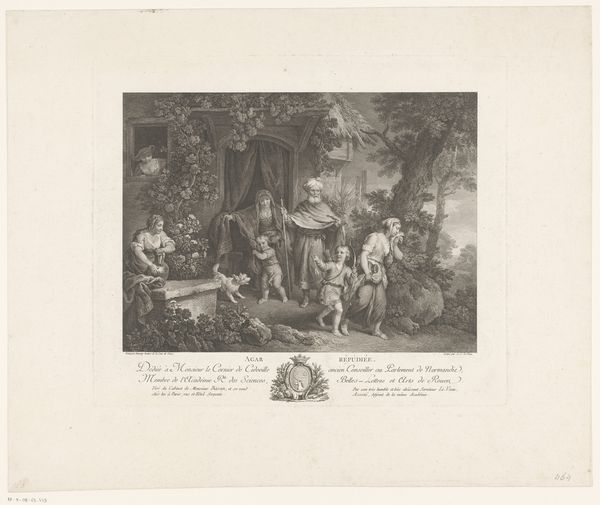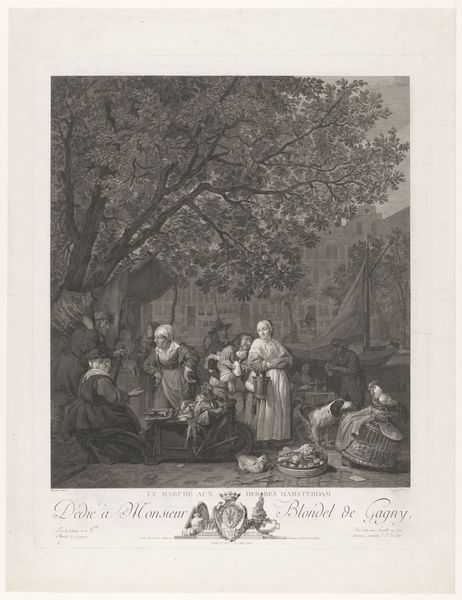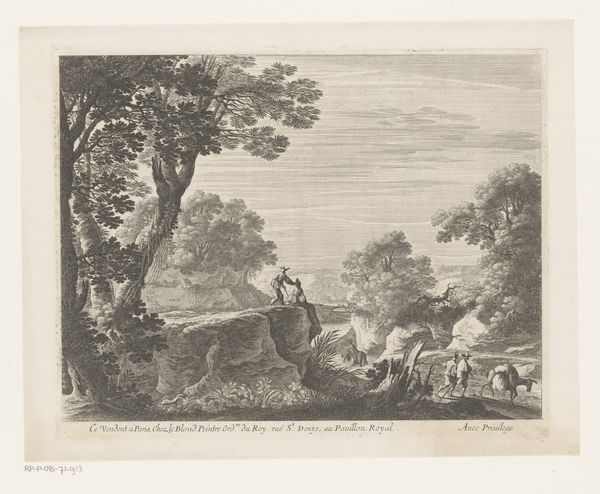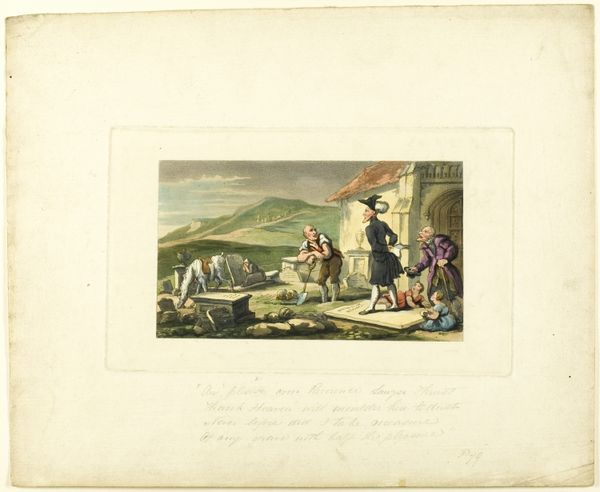
Dimensions: Sheet: 10 5/16 × 11 15/16 in. (26.2 × 30.3 cm) Plate: 8 11/16 × 9 7/8 in. (22 × 25.1 cm)
Copyright: Public Domain
Curator: Here we have “The Oyster Eaters,” an etching and engraving from 1778. It’s currently held at the Metropolitan Museum of Art. Editor: Immediately, I notice the strong contrast. The figures are bathed in this light that draws the eye, almost like a stage setting, juxtaposed against the darkness of the cave-like structure. Curator: Indeed. The print captures a slice of life, revealing the consumption habits and social dynamics around oyster harvesting and sales. Look closely at the figures: who seems to be laboring? Who seems to be profiting? Editor: There's such detail in the way light reflects off their clothing. The folds, the texture. It gives such an impression of the scene—though muted, considering its monochrome palette—its lines providing the texture. It feels almost dreamlike. Curator: It offers a peek into the economic realities, portraying the culinary delights accessible to various segments of society and highlighting the marketplace. These prints served as vital forms of visual communication. Consider the labor involved to make it, too. Editor: And notice how the figures are arranged! Their gestures create a flow, leading the viewer's eye through the composition and back to the oyster laden table. Curator: This work provides a social commentary on food culture and economic strata of the time and the hard labor that underpinned those meals. Etchings and engravings were more affordable means of creating and disseminating images that allowed this type of commentary to be widely consumed. Editor: Yes, seeing it within its historical and art-historical context—studying composition and use of light—only enriches our engagement with it. Curator: Precisely. Considering how this artwork was produced, distributed, and consumed expands its meaning beyond the surface representation. Editor: In the end, studying the relationship of all these elements allows for greater understanding of both the artwork and world it portrays.
Comments
No comments
Be the first to comment and join the conversation on the ultimate creative platform.
